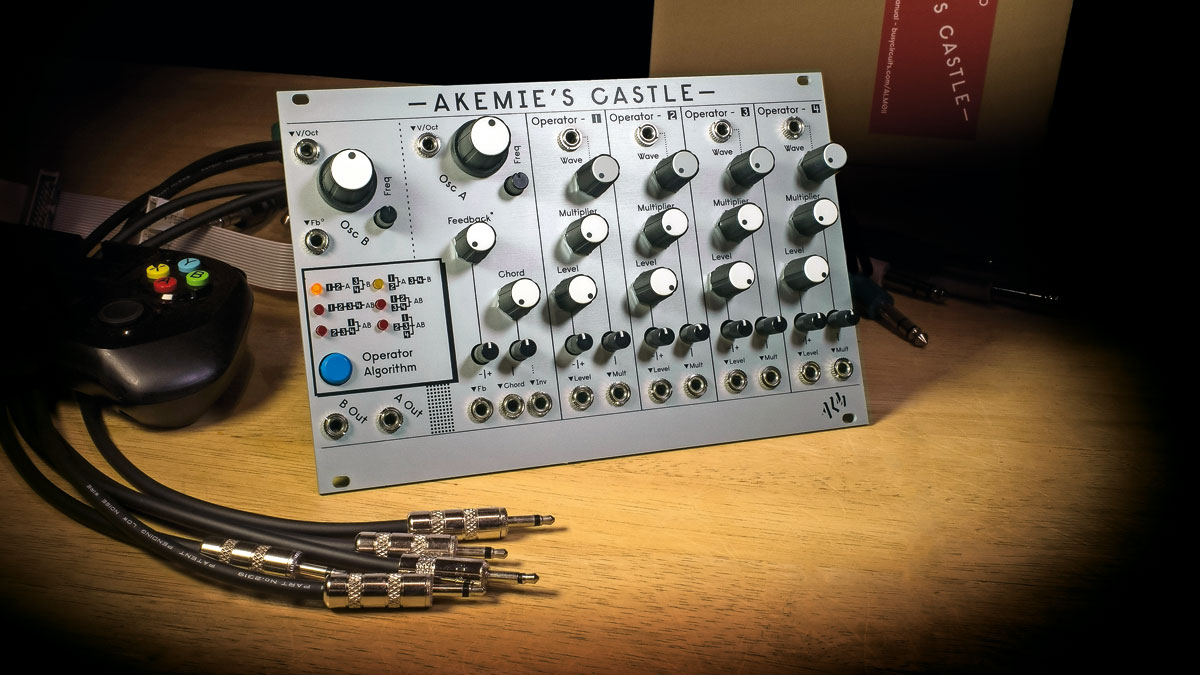MusicRadar Verdict
Akemie’s Taiko makes a superb base camp for off-piste Eurorack adventures – the more experimental your approach, the greater the musical reward.
Pros
- +
More than just a drum voice.
- +
Great sonics.
- +
Input for volts per octave allows for sending melodic content into the module.
Cons
- -
Nothing.
MusicRadar's got your back
What is it?
ALM has a number of modules in their catalogue that have become must-have items for Eurorack enthusiasts. Pamela’s New Workout and Squid Salmple are two such modules but the ethos of great sound, intuitive design and fun carry through to many others in the range too.
Akemie’s Castle is a big hit for fans of FM synthesis, so why not look at Akemie’s Taiko? Taiko is an FM drum voice that fulfils that function with aplomb but it’s a whole lot more, as we’ll find out…
The module itself is standard ALM fare, with crisp, clean graphics that make reading the logical labels easy, even in dim lighting. We're fans of the high contrast black and white knobs that serve a similar purpose.
Shaping up
As an FM drum voice, Taiko offers what you would hope for, with inputs for trigger, accent and choke. These all function just as expected, letting you hook up a sequencer to start pattern design but there’s a bit more to it than that.
Being FM in nature (Taiko uses original Yamaha chips too, so it really sounds the part) you can shape the voice into whatever you desire, combining six algorithms made from eight waveforms. There are controls for release and feedback, all CV-controllable, as is the speed control.
Melody Maker
This alone would make for a highly useful module but ALM has upped the FM ante for a drum voice by making this a truly musical device.
Input for volts per octave (with coarse and fine-tuning controls) means you can send melodic content into Taiko, transforming it into a kind of bastard love child of a DX7 and a Linndrum. It retains much of the percussiveness of the drum module it is designed to be but takes on a beautifully quirky melodic nature.
Adjusting the speed control can tame some of the percussiveness, bringing this into the realm of a more controllable FM synth voice – but it will never quite be that and that’s part of the allure.
Performance and verdict
Akemie’s Taiko is a bit of a magical module and it rewards experimentation. We went at it with riotous enthusiasm which could have resulted in a big mess but instead, it produced a lively, entertaining and uniformly pleasing result.

• ALM Busy Circuits Akemie's Castle
Wonderful sounding, frighteningly deep, totally inspiring and wild to experiment with.
• Mutable Instruments Marbles
Marbles is simple enough to dive straight into but has plenty of depth to keep you experimenting and your patches evolving.
Try feeding varying modulation sources into it and you’ll soon see the benefits, perhaps more than on any other module.
Simple LFOs tweaking the algorithm work but try patching a sample & hold into the wave CV or a coin toss into the two releases. It’s here that Taiko becomes more than a drum voice. That said, if an FM drum voice is what you need, then you won’t go far wrong here. Plus some.
MusicRadar verdict: Akemie’s Taiko makes a superb base camp for off-piste Eurorack adventures – the more experimental your approach, the greater the musical reward.
Hands-on demos
ALM TV
Andrew Huang
Knobs
Specifications
- TYPE: FM synthesis based drum voice Eurorack module
- KEY FEATURES: Original Yamaha ICs, CV and direct control of FM parameters (including algorithm selection, operator release envelopes, ratios, waveforms and feedback), Tracks 1v per octave for melody lines, optional Frequency ‘ramps’ for for further effects and FM Trigger, accent and choke trigger inputs; reverse polarity protection
- CONTACT: Busy Circuits
“Built from the same sacred stash of NOS silicon transistors and germanium diodes, giving it the soul – and snarl – of the original”: An octave-fuzz cult classic returns as Jam Pedals resurrects the Octaurus
What’s the buzz? Meet Yellowjacket, Cherry Audio's recreation of EDP’s trend-setting Wasp from 1978
“A fabulous trip through all eight songs by 24 wonderful artists and remixers... way beyond anything I could have hoped for”: Robert Smith announces new Cure remix album










